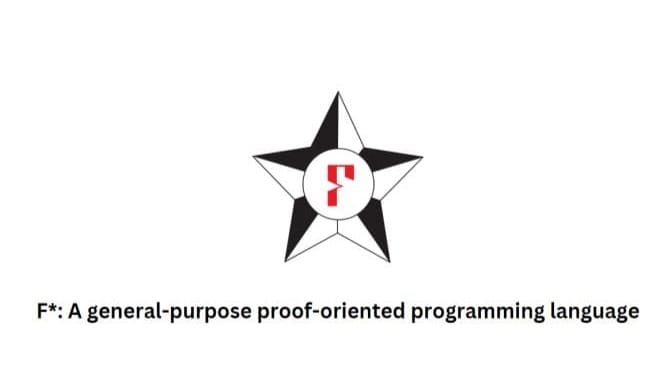F* : A general-purpose proof-oriented programming language

In programming, security is one of the major concerns and securing your applications before it is presented to the public is necessary. Systems today need to be secure and reliable due to their role in sectors like finance, healthcare, and communication. After searching a bit on this, I found F*, pronounced as F-star, which helps solve this problem of modern software development.
This blog is written by Akshat Virmani at KushoAI. We're building the fastest way to test your APIs. It's completely free and you can sign up here.
What is F*?
F* is a programming language focusing on formal verification. In other words, it is a proof-oriented programming language. Traditional languages aim to ensure code correctness through testing and debugging, but F* integrates mathematical proof techniques into the development process. This allows developers to write code that addresses strict correctness and security guarantees and is verified at compile time. F* is also compatible with multiple platforms, including OCaml, F#, C, and WebAssembly (WASM), making it versatile for various development needs.
Key Features of F*
1. Proof-Oriented Programming
F* enables developers to write programs alongside proofs that verify specific properties of the code. This makes F* ideal for critical software where correctness is the primary focus in development.
2. Interoperability and Compilation
F* supports compilation to multiple backends like:
- F#: For compatibility with the .NET ecosystem.
- C: For low-level, high-performance applications.
- WASM: For web-based and cross-platform applications.
3. Extensibility and Modularity
F* promotes modular programming, which helps developers to break down complex systems into smaller, verifiable components. This modularity simplifies the development and verification processes, making it easier to maintain and scale projects.
Applications of F*
Some applications of F* are:
1. Cryptography
F* has been used to develop formally verified cryptographic libraries as it is difficult to implement correctly, as even small errors can lead to significant vulnerabilities.
2. Secure Communication Protocols
Insecure communication protocols can lead to data breaches and compromised systems. Using F*, developers can create protocols with guaranteed security properties.
3. Critical Infrastructure
F* is well-suited for applications in critical infrastructure, such as healthcare and finance, where failures are not an option due to their high importance. By using F*, developers can ensure that these systems are safe and reliable.
Challenges and Limitations
While F* offers significant advantages, it is not without its challenges:
- Steep Learning Curve The concepts of dependent types and formal verification can be daunting for developers unfamiliar with these paradigms. Mastery of F* requires a solid understanding of both programming and mathematical logic.
- Performance Overheads Although F* supports compilation to efficient backends like C, the verification process can introduce performance overheads during development. Ensuring that proofs are both correct and efficient can be time-consuming.
- Niche Use Cases F* is best suited for scenarios where correctness and security are critical. For general-purpose programming tasks, traditional languages may be more practical.
Code Example:Let’s take a quick and small example of Python vs F*. In this example, we will see how to print the Fibonacci Series.F*:
Python:
Conclusion:
And there you have it! By using F*, you can ensure that your applications and systems are functional, secure, reliable and mathematically guaranteed to meet its specifications.
This blog is written by Akshat Virmani at KushoAI. We're building an AI agent that tests your APIs for you. Bring in API information and watch KushoAI turn it into fully functional and exhaustive test suites in minutes.

Member discussion